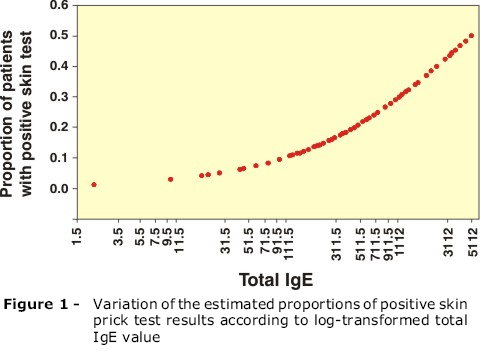OBJECTIVE: To compare the prevalence of allergy to cockroaches (Blattella germanica and Periplaneta americana) in asthmatic and non-asthmatic children and to determine the degree of agreement between the skin prick test and serum specific IgE levels, as well as to establish the relationship between cockroach allergy and total IgE levels. METHODS: A case-control study involving 76 asthmatic and 42 non-asthmatic children aged between 6 and 14 years was conducted in Recife, Brazil. All individuals were submitted to the skin prick test and to the measurement of specific IgE for B. germanica and P. americana, as well as to the determination of total IgE concentration. RESULTS: Asthmatic children showed a higher frequency of positive skin reactions to B. germanica (27.6 vs. 4.8%) and P. americana (27.6 vs. 2.4%) than non-asthmatic ones. The agreement between the skin prick test and the specific IgE results was reasonable for B. germanica (kappa = 0.25 ) and weak for P. americana (kappa = 0.17). Those patients who tested positive for cockroaches had a significantly higher geometric mean for total IgE than those who tested negative. The agreement between specific IgE and the skin prick test increased as total IgE levels rose, although some skin tests were negative even when total IgE levels were as high as 5000 kU/l. All determinations of cockroach-specific IgE were positive for total IgE levels greater than 2500 kU/l, even among asymptomatic patients. CONCLUSION: Allergic sensitivity to cockroaches was a predictive factor for asthma severity. The skin prick test is more appropriate for the detection of clinically relevant sensitivity to cockroaches than specific IgE determination.
Asthma; cockroaches; hypersensivity



